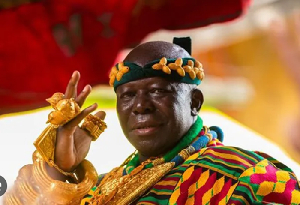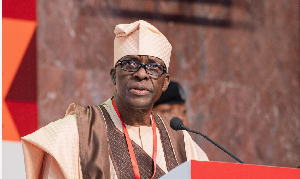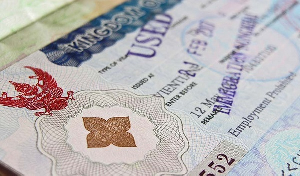In recent years, the actions of the Asantehene, Otumfuo Osei Tutu II, have sparked an unexpected response: a growing sense of unity and resistance among the Bono people.
This development, while perhaps unintended, has emerged as a direct reaction to the Asantehene’s claims that the Bono people owe allegiance to the Ashanti Kingdom, along with his recent elevation of Bono chiefs to paramountcy. For many Bono citizens, these actions are seen as oversteps, igniting a movement to affirm Bono autonomy and reassert a collective identity and solidarity.
Historical Context: A Delicate Relationship
The history between the Bono and Ashanti people is complex, with elements of both shared Akan heritage and long-standing rivalry. The Bono Kingdom, established in the 13th century, predates the Ashanti Empire, which rose to prominence in the 17th century.
Bono’s early establishment forms the foundation of its self-identity, and for Bono people, this long history as the first independent Akan state is a source of pride. Yet, when the Ashanti Empire expanded, parts of Bono came under Ashanti control, complicating the relationship and setting the stage for the current tensions.
Otumfuo Osei Tutu II, as the current Asantehene, has frequently emphasized the historical ties between Bono and Ashanti, framing Bono’s inclusion in the British-created Asante Confederacy as an enduring allegiance to Ashanti authority. Bono leaders, however, challenge this interpretation, arguing that any historical associations should not imply subservience today. For many, these claims are viewed as an imposition that does not honor Bono’s unique cultural heritage.
Unintended Consequences: A Unified Bono Front
Again, these claims, however, have not been welcomed in Bono. Instead, they have triggered a wave of resistance that is uniting the Bono people against what they perceive as Ashanti overreach. Bono citizens, intellectuals, and traditional leaders have increasingly rejected the notion that their people should owe any allegiance to the Ashanti Kingdom. This growing resistance is now becoming a rallying point for Bono unity, with many seeing it as a fight to preserve their autonomy and dignity.
Bono Identity Strengthening
The Asantehene’s assertions have inadvertently strengthened the cultural identity of the Bono people. Communities across Bono are reasserting their historical significance and promoting their unique traditions, especially their language. Cultural festivals, public events, and educational programs are being organized with the aim of preserving Bono heritage and passing it on to future generations. The Asantehene's attempts to integrate Bono into the Ashanti fold have led to an even stronger embrace of Bono history, rather than a submission to Ashanti authority.
Traditional and Political Resistance
Traditional leaders in Bono have become more vocal in defending their autonomy. Many chiefs, who represent the heart of Bono’s traditional leadership, have publicly pushed back against any suggestion that they fall under Ashanti rule. This resistance is not limited to traditional circles—political leaders from Bono and Bono East regions are also joining the cause, ensuring that Bono’s voice is heard on the national stage. The result is a unified front that crosses both cultural and political lines, solidifying Bono’s push for recognition as an independent entity.
Rejection of Paramountcy Elevations
One of the most contentious issues has been the Asantehene’s elevation of some Bono chiefs to paramountcy. These moves are seen as a direct assertion of Ashanti authority in Bono areas, which has further agitated the Bono people. Rather than bringing Bono chiefs into alignment with Ashanti leadership, the elevation of chiefs has become a flashpoint for resistance. Bono leaders argue that their chiefs should not be subject to Ashanti rulings, reinforcing their determination to maintain independence. Chiefs elevated by the Asantehene are viewed with mistrust and, in some cases, isolation, as Bono citizens perceive these appointments as a betrayal of their autonomy.
An example of this backlash occurred when a Bono paramount chief, elevated by the Asantehene, attempted to join the National House of Chiefs from the Bono Region received only two votes. This incident underscores the depth of Bono’s resistance to Ashanti-appointed leadership and reflects the people’s determination to preserve their independence.
A Growing Sense of Autonomy and Security Implications
The Bono people’s rejection of Ashanti influence has not only fostered internal unity but also encouraged external partnerships within the region. Chiefs and leaders from various parts of Bono and Bono East are working together more closely than ever before, forming a united front to challenge any attempts to undermine their autonomy. This cooperation is allowing Bono leaders to better articulate their collective interests, ensuring that they can stand up to the Asantehene’s assertions.
The increased advocacy within Bono communities is also sparking a cultural renaissance. As the Bono people reassert their identity, they are taking steps to educate younger generations about their history, traditions, and role within the broader Akan world. This cultural revival is driven by a desire to ensure that Bono’s legacy is not overshadowed by Ashanti narratives.
The Bono resistance has not only strengthened internal unity but also raised significant national security concerns. The growing opposition to Ashanti influence has led to protests and instances of unrest in parts of Bono, with reports of innocent people being harmed in the clashes in the past. As chiefs and leaders from Bono and Bono East unify in defiance, this movement is shifting from cultural preservation to a potential source of regional instability.
The situation now extends beyond regional pride; it poses security implications for the entire country. Tensions between Bono and Ashanti factions could escalate, drawing in uninvolved civilians and sparking broader inter-regional conflicts. National security agencies have raised concerns over the volatile nature of these disputes, particularly as reports of clashes have surfaced in recent past and on social forums.
A Diplomatic and Political Challenge for the Asantehene
The unification of the Bono people poses a significant diplomatic and political challenge for the Asantehene. As a respected figure not only in Ashanti but across Ghana, OtumfuoOsei Tutu II commands immense traditional authority. However, the increasing pushback from Bono is complicating his efforts to maintain influence over regions historically associated with Ashanti rule. The growing Bono unity highlights the limits of traditional authority in a modern, democratic Ghana, where regions like Bono and Bono East enjoy political autonomy and representation within the national framework.
The unintended consequence of OtumfuoOsei Tutu II’s actions—galvanizing a united Bono front—is a reminder that traditional power dynamics are evolving in contemporary Ghana. The Asantehene’s attempts to assert influence in Bono may have once worked within a historical context, but today, the Bono people are more determined than ever to safeguard their autonomy.
Moving Forward: Dialogue, Reconciliation, Government Mediation and Peace-Building
As tensions continue to simmer, there are growing calls for dialogue between the Asantehene and Bono leaders to resolve these issues peacefully. While the Asantehene’s actions may have unintentionally united the Bono people in opposition, there is an opportunity for reconciliation if both sides can engage in meaningful discussions that respect Bono’s desire for autonomy and independence.
For the Bono people, the unity born from these challenges may prove to be a lasting legacy of strength and identity. Rather than succumbing to external pressure, Bono has shown that it can come together to defend its culture, history, and leadership in the face of perceived threats.
Ultimately, the Asantehene’s efforts to assert authority over Bono may need to be rethought in light of the growing resistance. A more diplomatic approach that acknowledges Bono’s unique history and current realities could lead to a resolution that respects both the Ashanti Kingdom’s role and the Bono people’s right to self-determination.
Recognizing the risk of further conflict, the Ghanaian government has an opportunity to mediate, promoting solutions that honor both Ashanti and Bono identities without compromising national security. Government-sponsored peace-building initiatives, such as community mediation programs and educational campaigns, could help bridge divides and mitigate the risk of violence.
To ensure the safety of civilians and the preservation of cultural heritage, national security agencies are urged to monitor tensions closely, while proposing forums where both Bono and Ashanti leaders can address grievances constructively. With government support, both sides could engage in a diplomatic process that protects Bono’s autonomy while upholding the Asantehene’s influence within a framework that respects democratic principles.
Conclusion
While recent actions have sparked resistance and unity among the Bono people, it’s important to recognize that peaceful coexistence between the Bono and Ashanti communities is possible—an ideal already embodied by many in the diaspora. Across the globe, Ashanti and Bono people live side-by-side, collaborating in community organizations, cultural events, and shared traditions that strengthen their collective identity as Ghanaians. This harmony abroad serves as a powerful reminder that unity can be achieved at home through mutual respect and dialogue.
As Bono leaders continue to assert their independence, both sides have an opportunity to look to these examples of cooperation as a foundation for peace-building within Ghana. Through dialogue, government intervention, and a commitment to respect each other’s histories, Bono and Ashanti communities can foster a partnership that honors both autonomy and shared heritage. By building on the harmony seen among their people abroad, the Bono and Ashanti can work toward a peaceful and respectful relationship, enriching Ghana’s cultural landscape and ensuring stability for future generations.
Click to view details



Opinions of Monday, 18 November 2024
Columnist: James Diawuo-Takyi
How the Asantehene’s actions are uniting the Bono people unintended consequence
Opinions


















